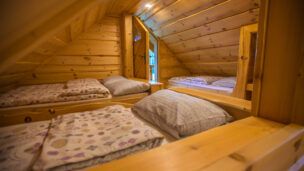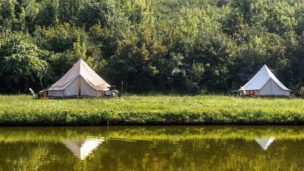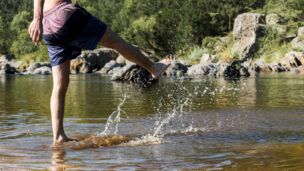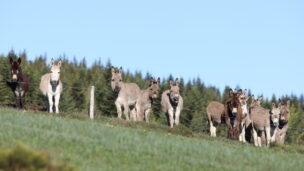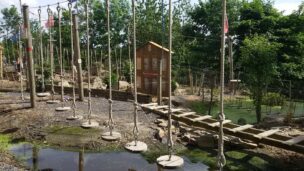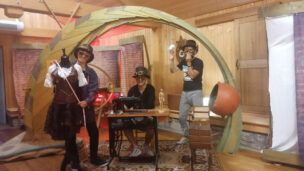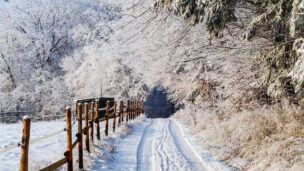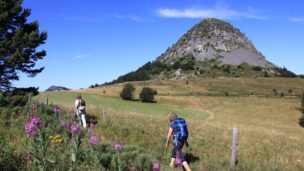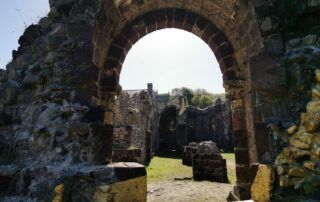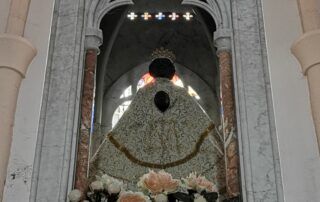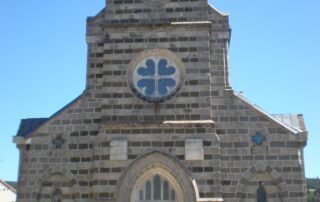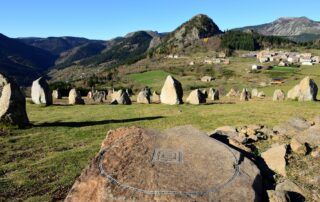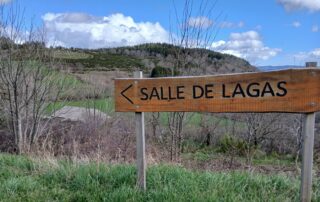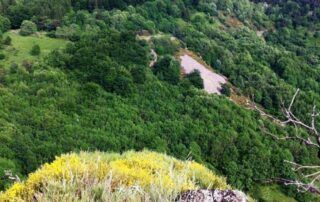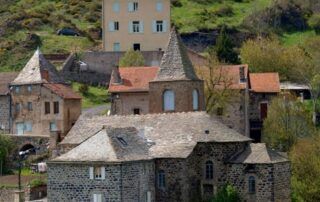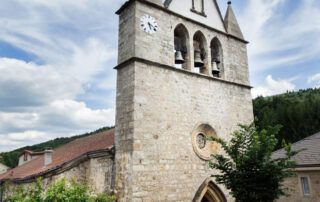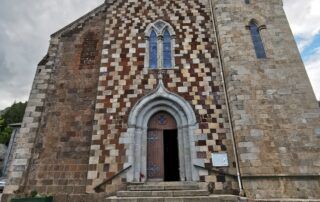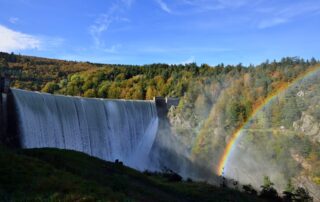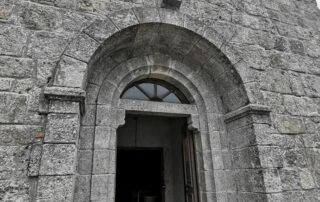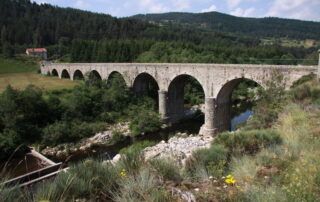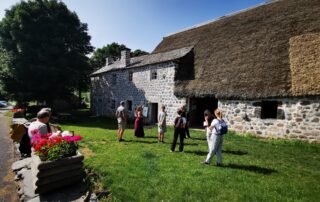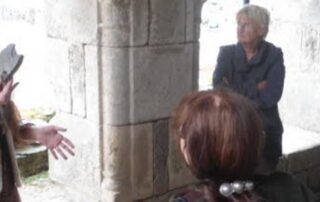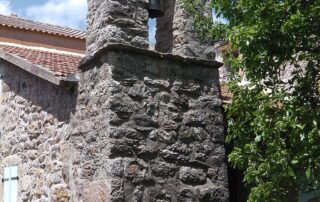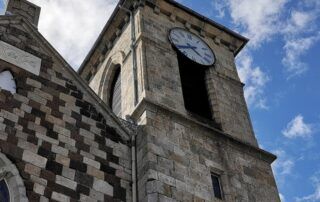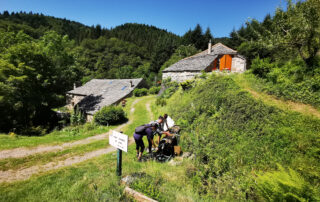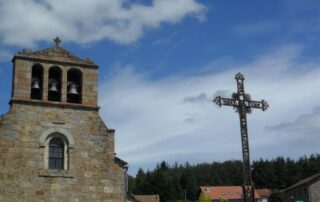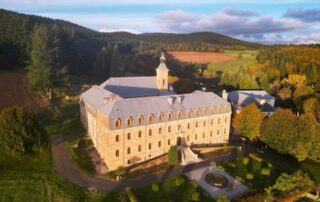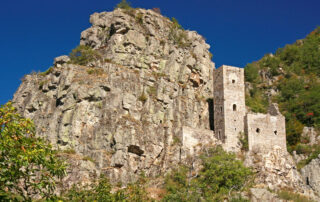
Impressive tower clinging to its rock below the village and above the splendid gorges of the river.
This tower has been renovated but you cannot visit it because of possible rock falls!
The Grange dam on the Veyradèyre supplies a water intake towards Lake Issarlès. It measures 12.5 meters in height, 45 meters in length. It was impounded in 1954. Trout fishing.
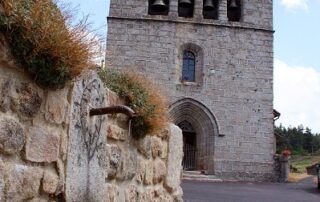
The church of Lachapelle-Graillouse was built in the XNUMXth century. Classified in the directory of historical monuments, it is called "Notre-Dame de l'Assomption".
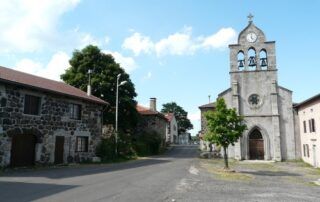
The St Michel church dates from the end of the XNUMXth century. The arcaded comb bell tower is characteristic of the churches of the mountain. The first priest was Father Paveyrane.
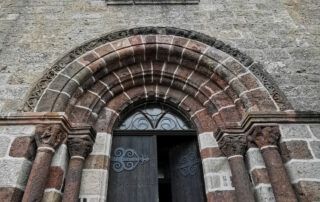
The magnificent church has part of the XNUMXth century, it was restored with the help of the parishioners.
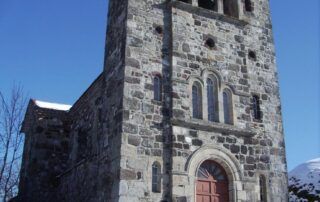
The church of Saint Alban in the mountains, with its comb bell tower, dates from the 1880s.
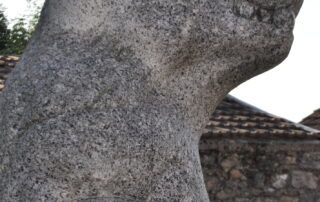
The first official victim of the Beast was Jeanne Boulet, a young girl aged fourteen, killed on June 30, 1764, in the village of Hubacs in the parish of Saint-Étienne-de-Lugdarès.
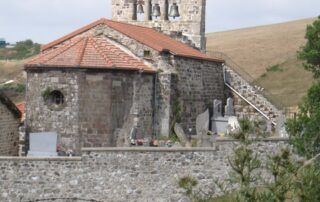
The Saint-Jean-Baptiste de Lavillatte church was the seat of a commandery of the Hospitallers of Saint-Jean-de-Jérusalem.
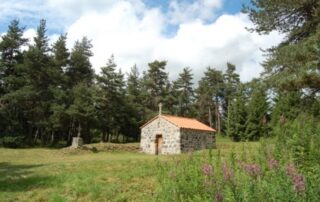
Going deeper into the woods of Issanlas, you will arrive at the Chapelle Saint-Clair, whose waters from the fountain are said to cure eye diseases.
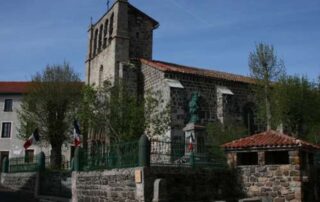
The only thing left of the Romanesque church of Saint-Martin is its beautiful sculpted, listed portal. It retains a great deal of mystery because its history remains unknown.
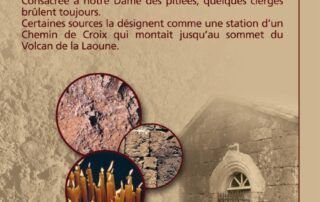
The origins of this small chapel remain mysterious. Its style is of Romanesque inspiration from the XNUMXth or XNUMXth century. Consecrated to Notre Dame des Pitiés, a few candles are still burning.
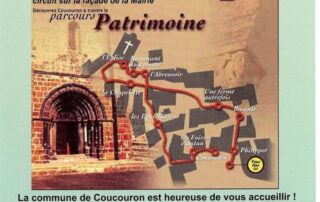
Through this thematic circuit, we invite you to discover and observe the architectural heritage of the village, such as the traditional constructions in volcanic rock, which testify to the geology of the place.
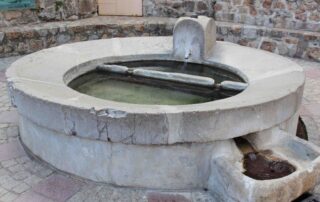
The hot water fountain (53°) of Saint-Laurent-les-Bains, located in the heart of the village, comes out naturally at this temperature.
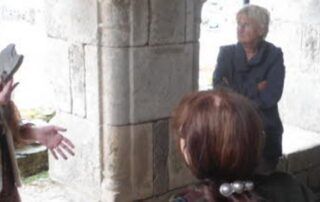
Sainte Abeille has a double origin: there was on this site a building dedicated to a Gallic God called Abelio. The Christianization of the site was probably carried out at the beginning of the Middle Ages and this until the middle of the XNUMXth century.
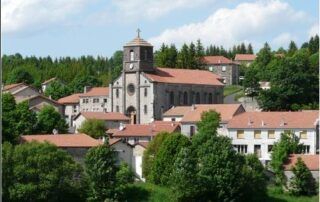
A first light construction was erected in 1774 to serve as a “branch” church. The current church was built in 1875. It is in neo-Romanesque style.
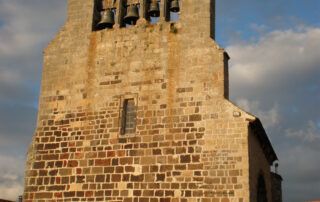
The first known mention of this listed Romanesque church dates from the XNUMXth century, when it was sold by the Lords Ithier de Solignac and Pons de Jaujac. The abbey turned it into a small priory which it kept until the Revolution.
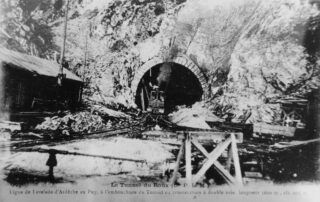
Road tunnel 3 meters long; it was originally built to allow the passage of trains from the “Transcévenole” line.
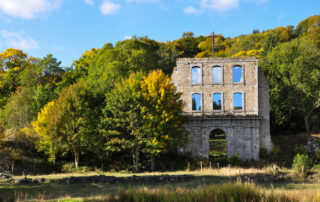
The Chartreuse de Bonnefoy was founded in 1156 on land donated by Guillaume de Fay, known as “Jourdain”, lord of Mézenc. The Carthusian order chose this isolated site to found one of its monastic establishments. Guided tours offered in summer.
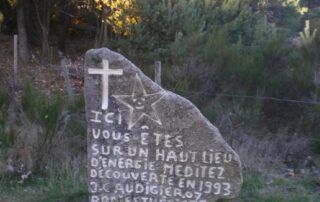
The Chazornes stone, located in the commune of La Chapelle-Graillouse, is considered a curiosity because it is said to be "magnetic".



